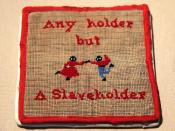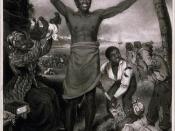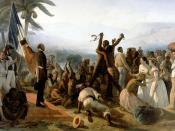During the time period of 1825-1850, democratic ideals of eqality, liberty and pursuit of happiness were inculcated into the masses of America through a series of reform movements that emerged in the antebellum era. These reforms ranged from temperance, abolition and spirituality to public schools and good living conditions. Revival of religion provided new ideologies that paved the way for the Second Great Awakening. The reform movements of this period held a belies in the innate goodness of human nature which can improve his social, moral and spiritual life.
Behind the reform impulse lay a religious movement - the evangelical revivals known as the second great awakening. Charles G.Finney established that protestant revivalism was a powerful force for the improvement of society as a whole.( Document B ). Even the " harlets, and drunkards, and infedels, and all sorts of abondoned characters are awakened and reformed", proclaimed Finney. He led ,massive revivals in Rochester (1830 ) and NYC ( 1831 ).
It contributed to the growth of Methodist, Baptist and other evangelical denominations in America. It was believed that humans were moral free agents of God who could choose goods over evil.
The age of reforms saw a great feminist movement in America. Many reformers demanded equal status for women in society. New York Female Reform Society tried to close houses of prostitution and opened up a refuge to convert prostitutes to evangelical protestants. The Seneca Falls, New York meeting in 1848 ( Document I ) and its 'Declaration of Sentiments and Resolutions, demanded not only for the equal status of women but it also demanded right to vote for the women like men. It was indeed a revolutionary idea in those days and it laid the foundation of the idea of equality of sexes.
The reform movement converted...


